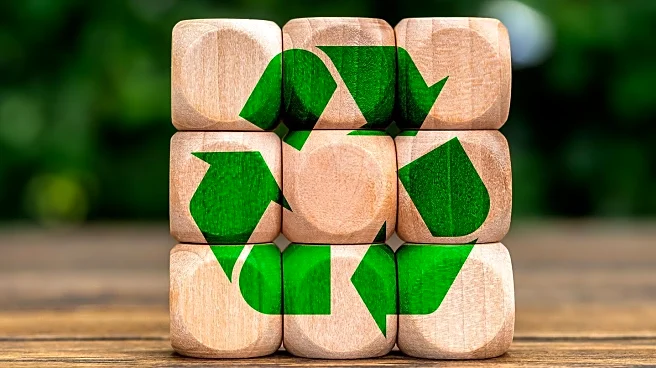What's Happening?
Researchers at the University of Illinois Urbana-Champaign have developed a method to convert food waste into sustainable aviation fuel (SAF). This innovation, detailed in a study published in Nature Communications,
uses hydrothermal liquefaction (HTL) to transform natural waste into biocrude, which is then refined into jet fuel. The process meets all current industry standards without needing to blend with fossil fuels. This development is significant as commercial aviation is a major contributor to global greenhouse gas emissions, and SAF is seen as a viable alternative to conventional jet fuel. The research team, led by agricultural and biological engineer professor Yuanhui Zhang, believes this method could also be applied to other types of oils and materials, offering potential business opportunities and economic development.
Why It's Important?
The aviation industry is under pressure to reduce its carbon footprint, with a target of net-zero emissions by 2050. The development of SAF from food waste presents a promising solution to this challenge. By converting waste that would otherwise contribute to greenhouse gas emissions into fuel, this method not only addresses environmental concerns but also offers a sustainable use for the 30% of food wasted globally each year. The successful lab-scale demonstration of this technology suggests it could be scaled up for commercial production, potentially transforming the aviation fuel market and contributing significantly to decarbonization efforts.
What's Next?
The next steps involve scaling up the technology for commercial production. The research team is optimistic about the potential for industry adoption, given the successful passing of Tier Alpha and Beta prescreening tests required by the American Society for Testing and Materials and the Federal Aviation Administration. As the aviation industry seeks sustainable solutions, this innovation could attract interest from airlines and fuel producers looking to meet environmental targets. Further research and development will focus on optimizing the process and exploring additional feedstocks for SAF production.
Beyond the Headlines
This development highlights the broader implications of using waste as a resource, aligning with circular economy principles. By repurposing food waste, the technology not only reduces emissions but also addresses food waste management challenges. The potential to replace petroleum-derived compounds in plastics further underscores the versatility and economic potential of this innovation. As industries increasingly prioritize sustainability, such breakthroughs could drive significant shifts in production and consumption patterns.











